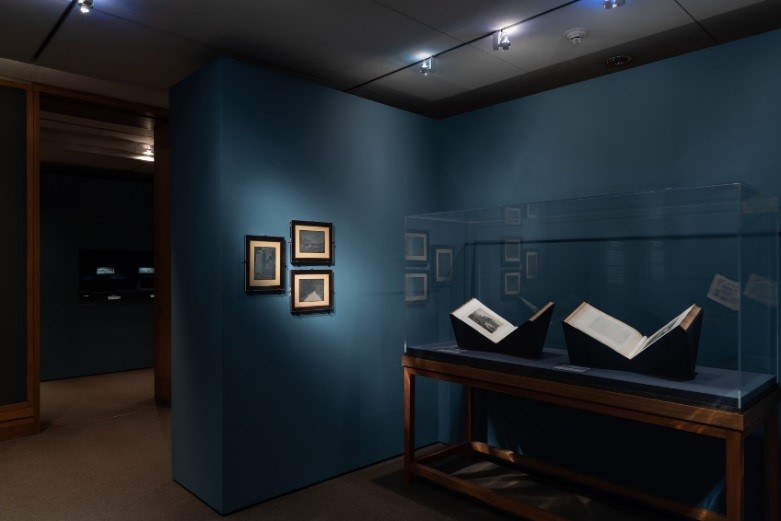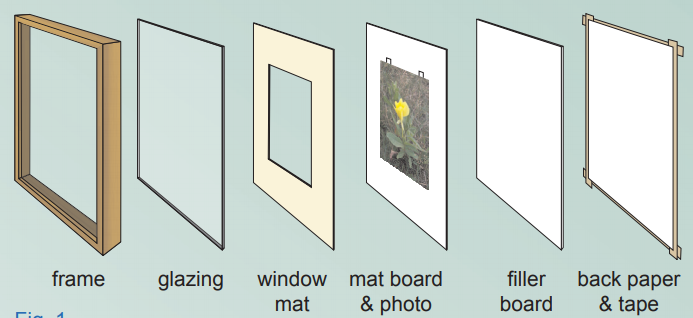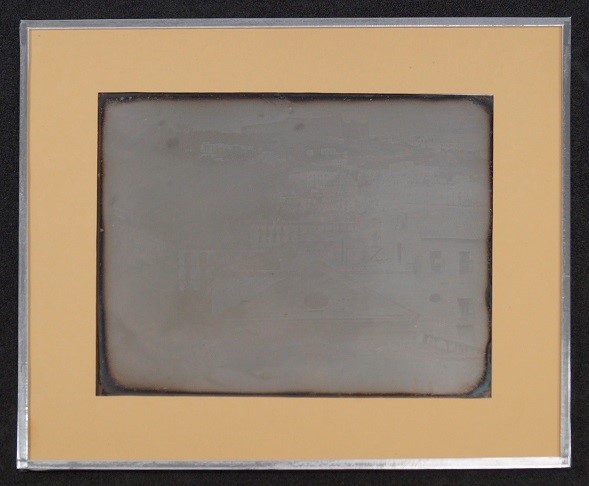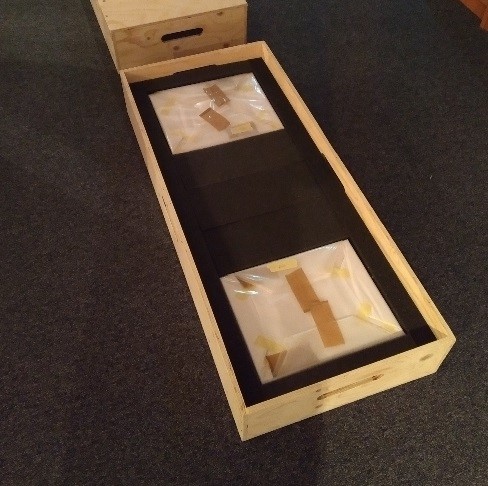
Thanks for joining me for another blog post revealing how conservators care for the physical and chemical stability of photographs and ensure their preservation for future generations.
Often our job is to care for photographs within the National Science and Media Museum’s own spaces—whether in the stores, research facilities or galleries. In this post I will explain how we prepare photographs to be displayed at other museums in the UK and the rest of the world.
Temperature, relative humidity and light are some of the main agents of deterioration to consider. We need to monitor them, predict them and control them to help preserve our objects. When it comes to displaying and storing photographs in our own museum spaces, we usually have a good understanding already. We know the best route to move the objects from the stores to the galleries; the temperature and relative humidity that can be achieved in our spaces; whether these can be maintained throughout the display period; and the type and intensity of artificial light used to illuminate the objects.
When preparing our photographs to be loaned and displayed at other museums and galleries, a number of additional measures are required. First, we assess the condition of the objects requested and estimate time for conservation treatments. Second, we analyse the borrowing institution’s gallery spaces to ascertain if they meet the parameters of temperature, relative humidity and light levels. Third, and upon approval that the photographs can be sent on loan, conservation work begins and condition reports with detail information regarding the condition of the objects before living the museum are produced. Fourth, we plan the packing of the objects ensuring they are protected on their journey that can be a combination of travelling by road, air or sea.

In Episode 1, I told you about the 159 plates from the Ellis daguerreotype collection that we hold here at the National Science and Media Museum. Five of these daguerreotypes were requested by the Metropolitan Museum of Art to be on display in their exhibition Monumental Journey: The Daguerreotypes of Girault de Prangey.

To mitigate the significant changes in temperature and relative humidity during transport from Bradford to New York, I created sealed packages to control the moisture content within each frame package. The sealed package is composed of glazing which filters out the UV, conservation grade board with the photograph mounted onto it, an insulation layer and backing board. We use materials that have special properties and allow us to achieve the ideal microclimate of 50% relative humidity.

These specialist protective materials that complete the sealed packages are: Marvelseal®, a thin barrier film made of plastic with metallic coating; Correx®, an inert, lightweight corrugated plastic board; Artsorb®, a sheet material made of plastic fibres impregnated with silica; and aluminium foil tape.
The Marvelseal® is impermeable, helping to prevent the transmission of water vapour within the sealed package. The Correx® provides a sturdy support and is a relatively good thermal insulator which resists changes in temperature. The Artsorb® contains pre-conditioned silica which helps to absorb and desorb moisture above or below the desired 50% relative humidity. Finally, we finish the sealed package with aluminium foil tape which helps ensure moisture does not enter or escape the package.

Additionally, the objects are packed inside a bespoke crate, which also contributes towards minimising significant fluctuation of heat and moisture. Furthermore, this provides padding and support to avoid physical damage during transport.
The next step of the loan process is travelling with the objects to the borrowing institution. Museums may send their own experienced staff to accompany objects in transport and they are known as ‘couriers’. As a courier I had the responsibility to oversee every step of the journey—including going to the airport warehouse, where the air cargo is packed before being moved to the aircraft’s cargo loading area. This time I had the chance to try some different-looking protecting gear over my shoes!


I travelled as a passenger in the same aircraft as our daguerreotypes. On arrival at JFK Airport I watched the crate being transferred to a truck and then accompanied it onwards to the museum where the crate was safety stored overnight. Over the following days (and still a bit jetlagged!) I went to the museum to unpack the crate, check the condition of the daguerreotypes against their original condition reports written back in Bradford, and oversee the installation of the daguerreotypes on the wall.

On a professional level, being a courier is a great opportunity to meet other conservators and, when time allows, exchange knowledge and experiences. For the Science Museum Group, it is a prodigious chance to see our collection exhibited in other museums, increasing its profile and awareness as well as opening the doors for research projects.



